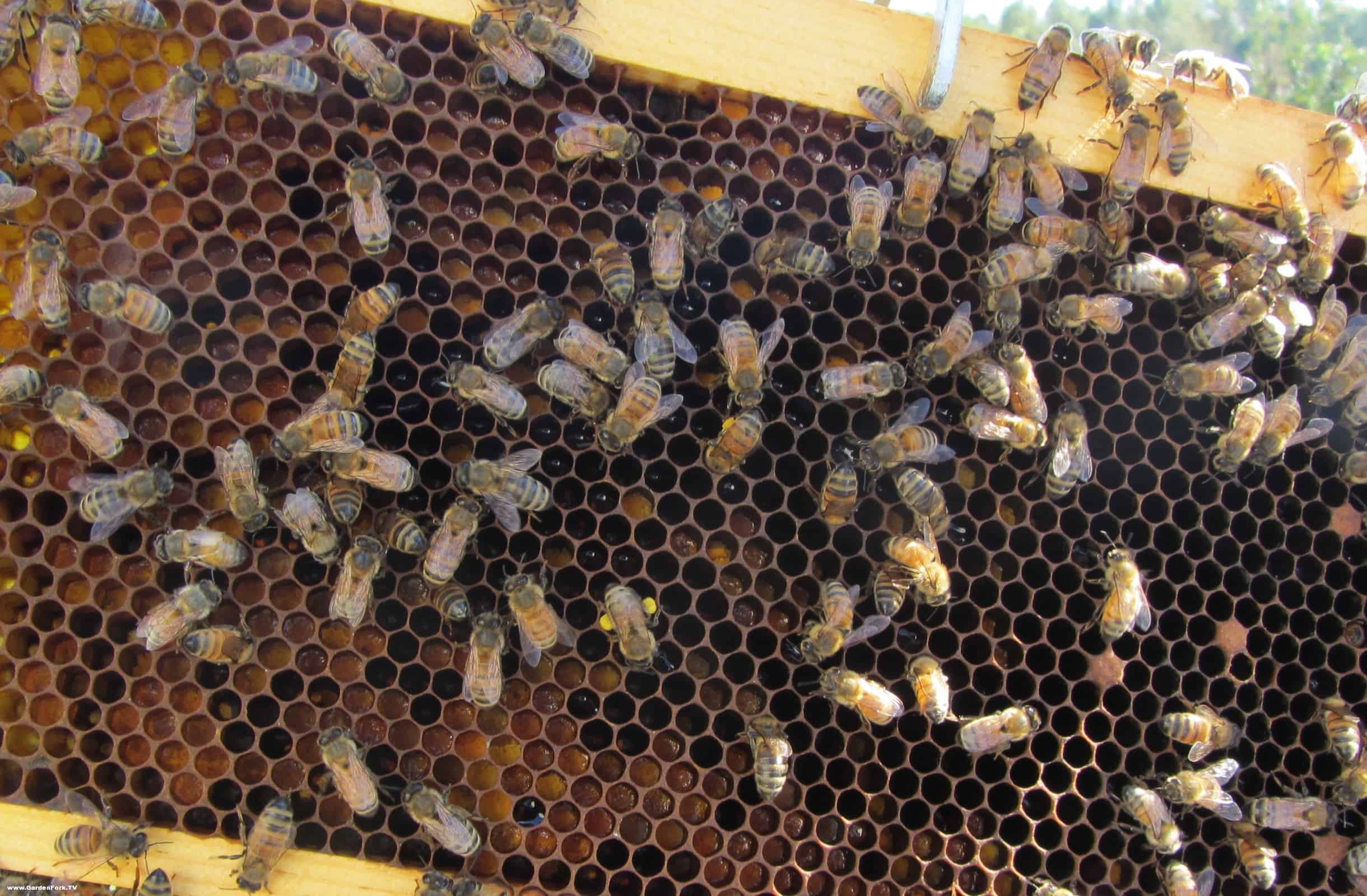Pollen is the topic of this post. In this image you can see quite a bit of it in the comb. It is of various colors and what I've seen them bringing in, at least the day of this hive inspection, is yellow. In fact, if you look closely at this picture you'll see a couple of bees with what looks like little yellow corn kernels on them. This yellow substance is pollen and it is held in the pollen baskets on their legs.
Bees, like humans, require protein to survive and pollen provides that protein. The honeybees mix this with some nectar and produce something we call "bee bread" which is fed to the larva. Without this source of protein, the bees won't develop. Some beekeepers will provide "pollen patties" to their hives. This is a man-made substitute for pollen which they will, apparently, use like pollen. I have not had any experience with pollen patties at this point.
Pollen is a little bundle of cells covered in a protective coating. The cells include vegetative ones and also a couple of reproductive ones. Pollen is the sperm of the plant and is a necessary component for reproduction. Plants which utilize pollinators like honeybees produce pollen which sticks easily to these pollinators and is carried from the anther to the stigma, thus reproduction in the plant. That's really the main reason plants have flowers - to reproduce.
Bees, flies and other pollinators live in symbiotic harmony with flowering plants. These plants produce lots of pollen and some of it gets moved from the anther to stigma, helping to ensure reproduction in the plant. The plant relies upon these pollinators. The plants, in return, provide the protein needed for the bee to reproduce.
Happy beekeeping,
Matt
Read all of Matt’s Inside the Hive Posts here
Matt (twitter @MattInTheGarden) likes pickled cucumbers but not pickled beets. He thinks matrix math is cool. Matt wishes there were less lawyers and more scientists in the world. He knows there are some serious steering issues with Fred Flintstone's car that nobody else seems to care about... oh yeah, folks... chuckle away at that stone-age humor. Haha very funny. Matt's not amused by Hanna-Barbera's lack of knowledge about vehicles and engineering, let alone physics.


Hub Rowlands
i would like your recipe for essential oil for bees thank yoou